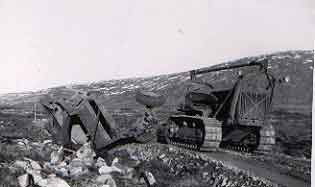 |
 |
 |
 |
 |
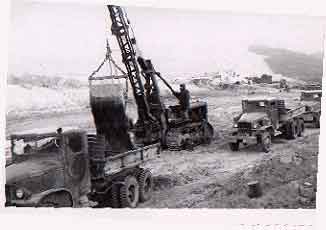 |
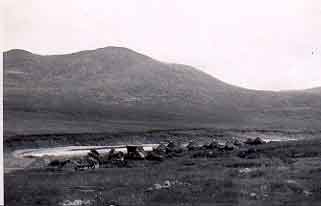 |
 |
 |
 |
 |
|
Richard J Vasquez
I was delighted to visit your website and read
about the White Alice Projects at the AC&W Sites in Alaska.I
was involved in the early construction of those sites in 1952
and 1953.
I have many memories of that time, that place, that work, and
, above all, that WEATHER! I hope you don't find me too wordy,
but in my twilight years I should tell a few stories before the
colors fade.
I suppose it began when, in May 1952, seven new 2nd lieutenants,
fresh out of Engineer School in
Ft Beloir, VA were ordered to report to the 925th Engineer Aviation
Group, Ft Richardson, Alaska. We were further assigned to either
the 807th EAB at Ladd Field, Fairbanks ( now FT Wainwright), or
the 813th EAB at Ft Rich, Anchorage.These units were part of SCARWAF,
Special Category, Army With Air Force. In July, 1952
I was assigned to Indian Mountain (Utopia) AC&W Site. Now,
remember, most or all these sites were on mountain tops and needed
to be manned and supplied year-round. In the summer that was easily(?)
accomplished by switchback roads up to the mountain top that could
be negotiated by Cat, jeep, or weasel. Even with snow on the ground
Cats and weasels could make it to the top. However, to provide
year-round access, aerial tramways were constructed, or at least
attempted around the back of the mountain where we were building
the road from Utopia Creek ,up to the base of the mountain, where
the (never-to-be-built) tramway was to start. We were about
1/2 mile downstream from an extensive gold mining operation. It
included dozers, trucks, a dragline, and a very large, skid-mounted,
gold processor. I can not conceive how they got all that
equipment into such an isolated location. If I remember right,
the airfield at base camp was there before the AF moved in. Also,
there was a very small airstrip near the gold mine.
-The written text and correspondence is reasonably
self explanatory.
At Indian Mountain, there was no clear slope connecting the mountain
top with the base camp at the runway. That called for a 2-mile
road across the tundra, from Indian Creek, that was my job.
We toiled all summer and into the fall with deuce and a half jimmie
dump trucks, while a crew under Lt John Dobson was attempting
to build the concrete footings for the radar at top camp. We lived
in tents, and when the weather got really cold and the snow blew,
we got Jamesway huts.... kind of arctic Quonset Huts.
I guess they took pity on me and, in November 1952, they pulled
me back to Fairbanks before I went completely bonkers.
After Indian Mt, I was sent to Mt Sparrevohn. Now, Sparrevohn
was a more complete facility. It had Quonset huts, Butler buildings,
and other more or less permanent facilities. The Engineer troops,
however, chose to sleep in tents, near the base camp. I guess
they preferred to live independently, and not mingle with
the 'zoomies' (Air Force).
It too had a switchback road from the basecamp/airstrip to the
mountaintop, along with a tramway that never worked, at least
to to my knowledge. Maybe they got it up and running after I left...???
There was a third access to to top when there was too much snow
on the switchback road.....down the runway, across the tundra
and up a very long, sloping ridge that eventually reached the
top-camp. Since the route was only usable by Weasels
(the tracked variety) it was aptly named 'Weasel Ridge".
I can assure you, it was a thrilling ride up the ridge...about
10 feet wide in spots, with almost shear drops on each side..at
least they looked that way.
I stayed at Sparrevohn till April 1953, when my term of enlistment
was coming due, and was returned to the States ('Outside' as we
would say) and was discharged at Camp Kilmer, NJ, on May 29
1953..... the same day Hillary and
Gnorky(?) climbed Mt Everest.
Two last items about Sparrevohn.....
-I was told that it was named ,(
by Gen Old, CG Alaska Air Command,) after the AF pilot that first
landed a Helicopter on the mountain top, flying from Elmendorf
AFB through Merill Pass.
- It has been stated (so
many times that it has become a legend ) that every single
item of supply and construction used at Sparrevohn were brought
there by air...every board-foot of lumber, every piece of pipe,
every gallon of gas, diesel or fuel oil.....even the concrete
mix was flown in. Not so! During the summer and fall of 1952,
the US Navy, in a joint test with the Air Force , barged supplies
up the Kuskokwim River to the village of Sleetmute, where they
were offloaded till the ground froze and there was a good snow
cover. My good friend ,the late Harry Glazer, Brooklyn NY, was
the Engineer Officer coordinating the mission. The Air Force had
a contract with a mining company to haul the supplies overland,
via a 'cat-train' The contractor assembled a train (to the best
of my recollection, and photos I have) consisting of a D8 Cat
pulling 3 sleds loaded with 55-gallon drums and one D8 pulling
a sled loaded with a large fuel tank and a 'wanigan' (sp?) The
latter is a kind of caboose where the men slept, food was cooked
, and the men ate. The route (100 miles more or less) had been
scouted out by air. and during the haul, the boss flew the route
ahead of the train and dropped red flags to show the train the
best route. So much for the legend. I have photos of the arrival
and unloading of the train.
That winter the Air Force also attempted to drop 55-gallon oil
drum by parachute from C124s, but that was abandoned because so
many of the drums got loose and hit the frozen runway with a SQAUSH.
I could go on, it seems forever, with stories about these two
sites but...If anyone is interested in hearing more, I'm sure
I could find the time to tell a few ,more yarns.
 |
 |
 |
 |
 |
 |
 |
 |
 |
 |
 |
|
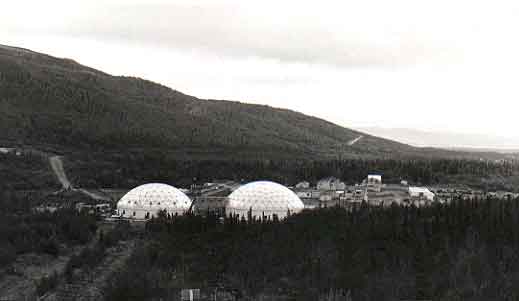 |
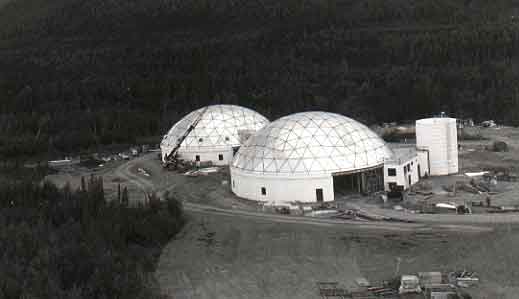 |
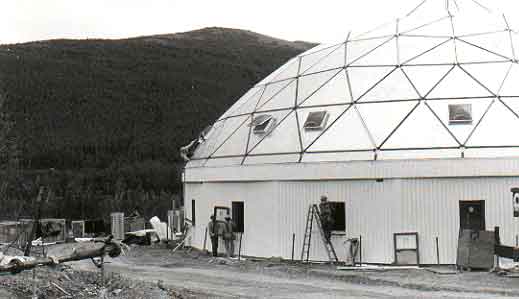 |
 |
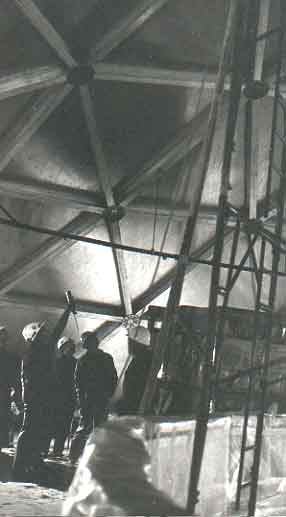 |
|